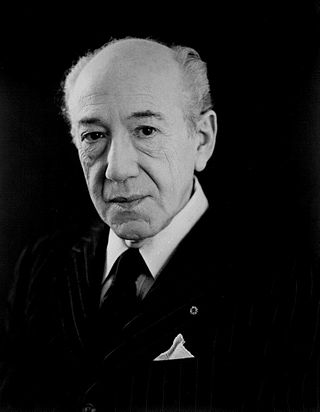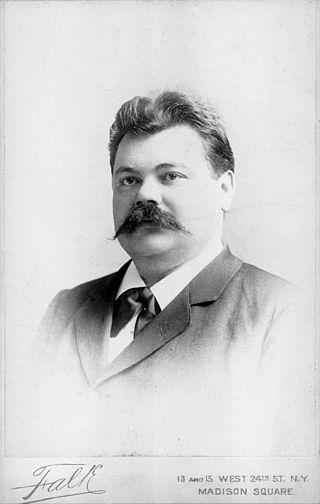Related Research Articles

Isaac Stern was an American violinist.

The viola ( vee-OH-lə, Italian: [ˈvjɔːla, viˈɔːla]) is a string instrument that is bowed, plucked, or played with varying techniques. Slightly larger than a violin, it has a lower and deeper sound. Since the 18th century, it has been the middle or alto voice of the violin family, between the violin (which is tuned a perfect fifth above) and the cello (which is tuned an octave below). The strings from low to high are typically tuned to C3, G3, D4, and A4.
A concerto is, from the late Baroque era, mostly understood as an instrumental composition, written for one or more soloists accompanied by an orchestra or other ensemble. The typical three-movement structure, a slow movement preceded and followed by fast movements, became a standard from the early 18th century.

Henryk Szeryng was a Polish-Mexican violinist.

Walter Hamor Piston, Jr., was an American composer of classical music, music theorist, and professor of music at Harvard University.

David Leo Diamond was an American composer of classical music. He is considered one of the preeminent American composers of his generation. Many of his works are tonal or modestly modal. His early compositions are typically triadic, often with widely spaced harmonies, giving them a distinctly American tone, but some of his works are consciously French in style. His later style became more chromatic.

Paavo Allan Engelbert Berglund was a Finnish conductor and violinist.

Edward Elgar's Cello Concerto in E minor, Op. 85, his last notable work, is a cornerstone of the solo cello repertoire. Elgar composed it in the aftermath of the First World War, when his music had already gone out of fashion with the concert-going public. In contrast with Elgar's earlier Violin Concerto, which is lyrical and passionate, the Cello Concerto is for the most part contemplative and elegiac.
Alan Rawsthorne was a British composer. He was born in Haslingden, Lancashire, and is buried in Thaxted churchyard in Essex.
Sir Eugene Aynsley Goossens was an English conductor and composer.
Joseph Philip Fuchs was one of the most important American violinists and teachers of the 20th century, and the brother of Lillian Fuchs.

Kenneth Daniel Fuchs is a Grammy Award-winning American composer. He currently serves as Professor of Music Composition at the University of Connecticut (Storrs).

Gail Thompson Kubik was an American composer, music director, violinist, and teacher.

Adolph Davidovich Brodsky was a Russian violinist.
The String Quartet in E minor, Op. 83, was one of three major chamber music works composed by Sir Edward Elgar in 1918. The others were the Violin Sonata in E minor, Op. 82, and the Piano Quintet in A minor, Op. 84. Along with the Cello Concerto in E minor, Op. 85 of 1919, these were to be his last major works prior to his death in 1934.
Walter Piston's Concerto No. 1 for Violin and Orchestra was written in 1939 and dedicated to violinist Ruth Posselt. Posselt, backed by the National Orchestral Association under Léon Barzin, gave the first performance at Carnegie Hall on 18 March 1940.
Walter Piston's Fantasia for Violin and Orchestra was commissioned in 1970 by Mario di Bonaventura, music director of the Hopkins Center Congregation of the Arts at Dartmouth College, who conducted the world premiere on March 11, 1973, performed by the Dartmouth Symphony Orchestra with Salvatore Accardo as the soloist. The commission had been made specifically for Accardo.
Jacques de Menasce was a composer, pianist, and critic of Austrian, and later American, nationality.
The so-called Violin Concerto No. 7 in D major, K. 271a/271i, may have been completed by Wolfgang Amadeus Mozart on 16 July 1777 in Salzburg. It has been called the Kolb Concerto.
Stanley Ritchie, an Australian violinist born in 1935, is a Distinguished Professor Emeritus of Violin at Jacobs School of Music, Indiana University. A noted specialist in historical performance, Ritchie is author of two relevant books, ‘Before the Chinrest - A Violinist’s Guide to the Mysteries of Pre-Chinrest Technique and Style’ (2012) and 'The Accompaniment in "Unaccompanied" Bach - Interpreting the Sonatas and Partitas for Solo Violin' (2016), both published by Indiana University Press.
References
- ↑ Ledin, Victor; Ledin, Marina. "Liner Notes to Naxos 8.559003 (Piston: Violin Concertos Nos. 1 and 2 / Fantasia for Violin". Archived from the original on 2012-10-11. Retrieved March 23, 2013.